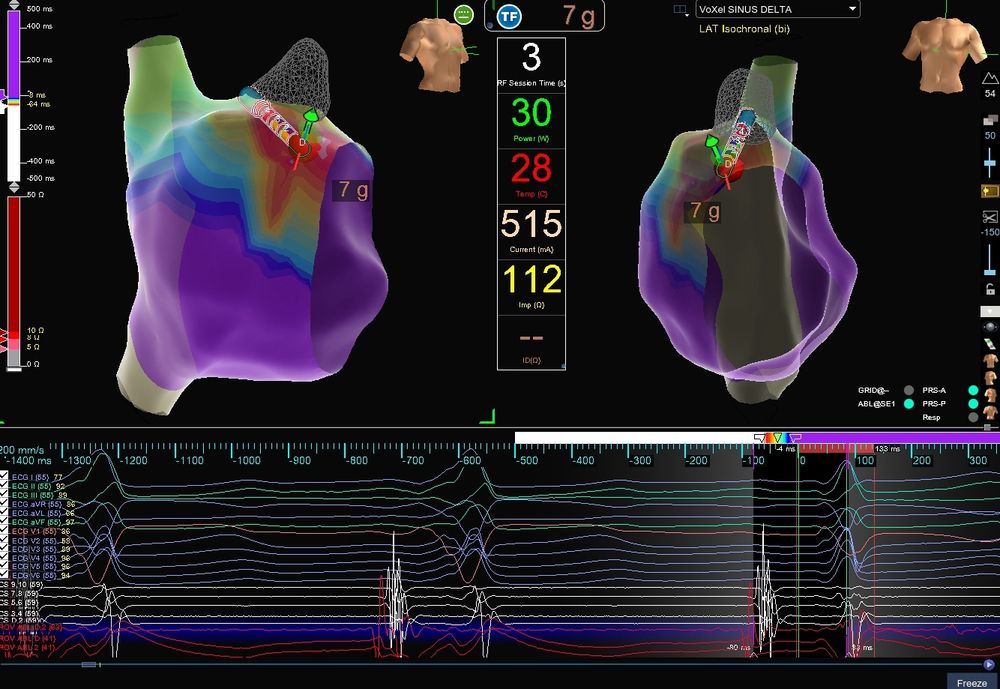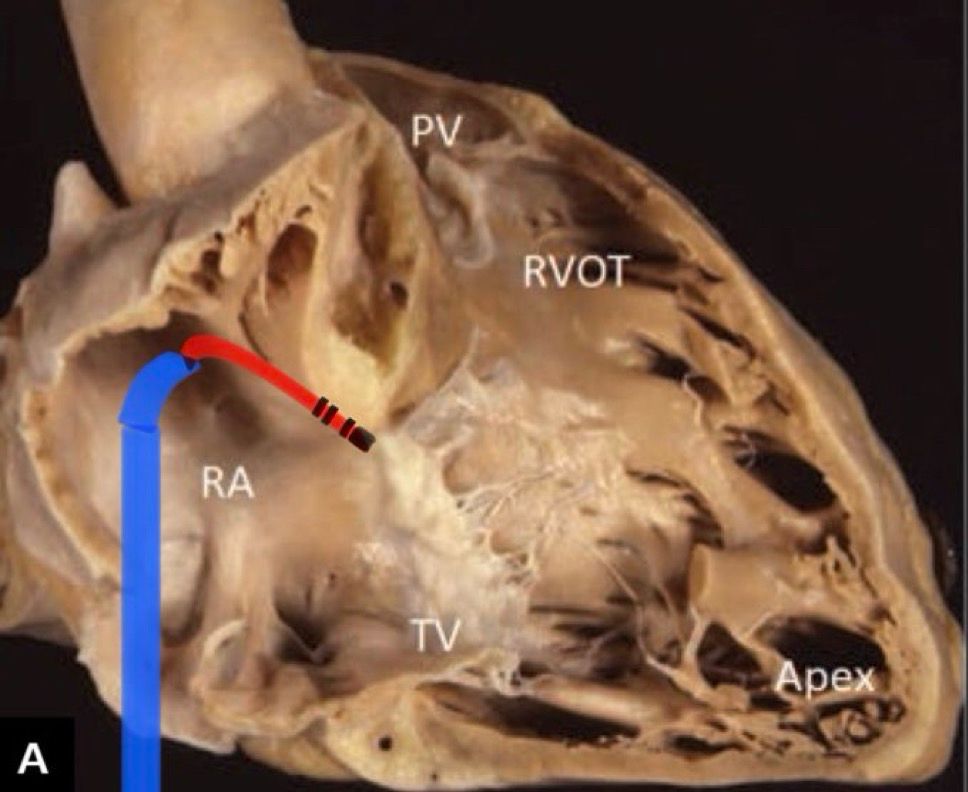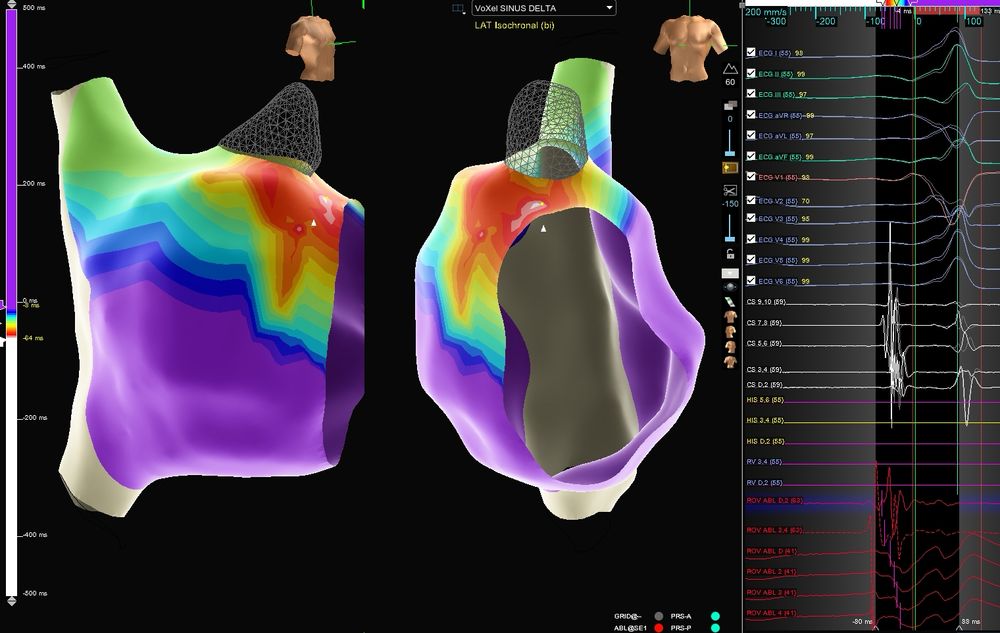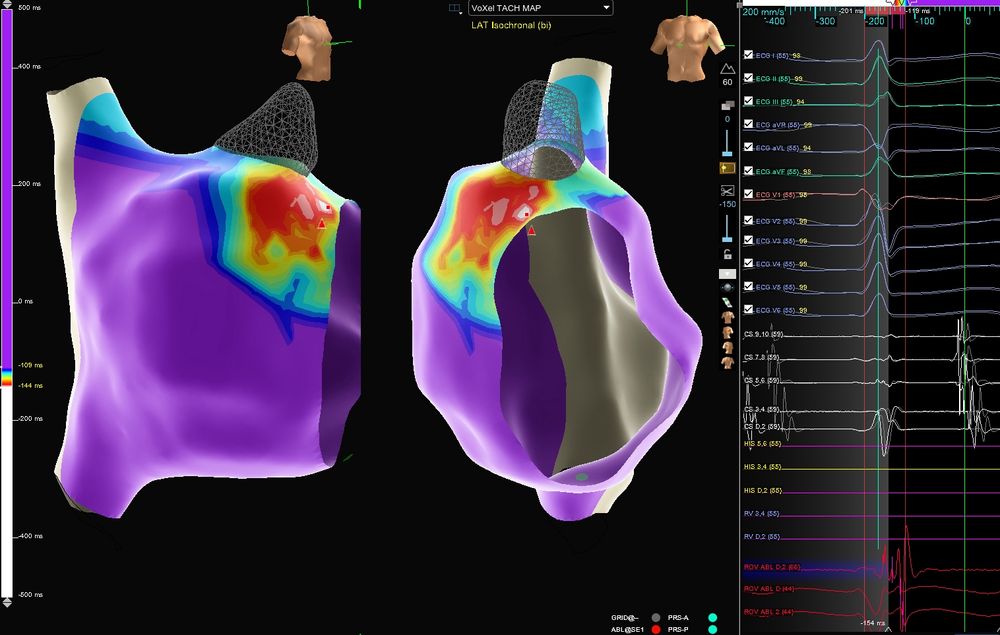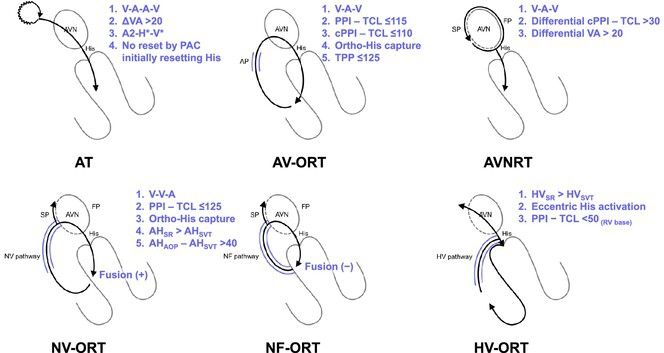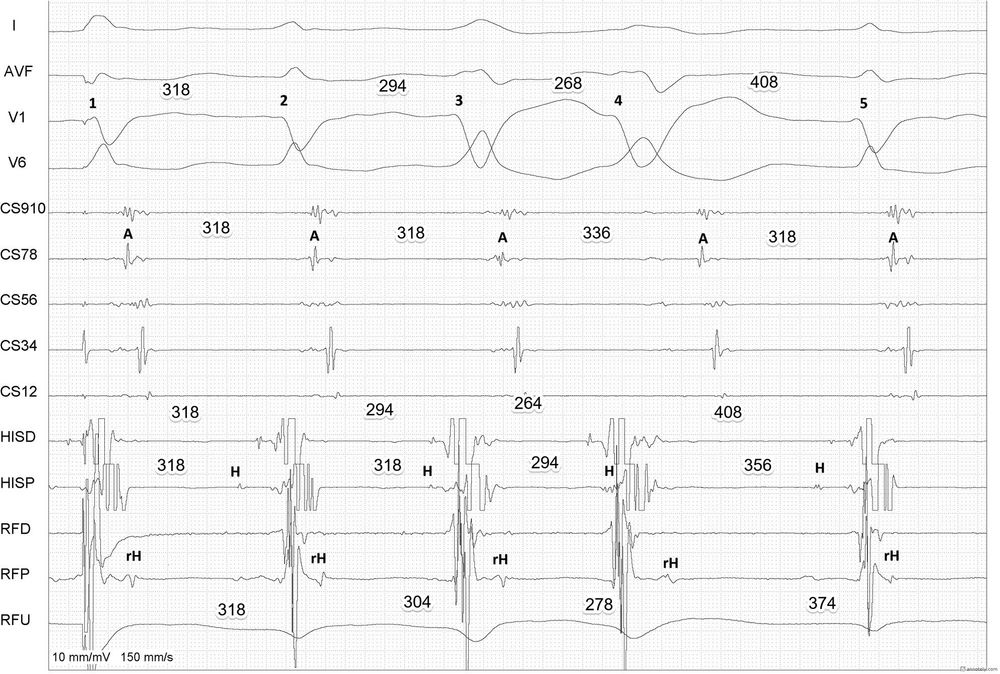Tagging the masters.. @narrowqrs.bsky.social @jeffreyvinocur.bsky.social @shah.md @prashsanders.bsky.social @jkhmd.bsky.social @epsri.bsky.social @wsauer.bsky.social @sivamulpurumd.bsky.social
30.03.2025 06:15 — 👍 0 🔁 0 💬 0 📌 0
We hope that you enjoy reading this!!
30.03.2025 06:04 — 👍 0 🔁 0 💬 1 📌 0
This is an excellent paper for understanding antegrade His capture and it's difference from retrograde His capture.
30.03.2025 06:04 — 👍 0 🔁 0 💬 1 📌 0
2. Novel Diagnostic Observations of Nodoventricular/Nodofascicular Pathway-Related Orthodromic Reciprocating Tachycardia Differentiating From Atrioventricular Nodal Re-Entrant Tachycardia by nagashima et al. (Doi: 10.1016/j.jacep.2020.07.007)
30.03.2025 06:03 — 👍 0 🔁 0 💬 1 📌 0
1. A novel form of tachycardia: av node - his purkinje reentry tachycardia by markowitz et al. in 1995.
30.03.2025 06:02 — 👍 0 🔁 0 💬 1 📌 0
Finally two papers that were indispensable to writing this report.
30.03.2025 06:02 — 👍 0 🔁 0 💬 1 📌 0
A lot of the egms had to be shifted to the supplementary material due to journal restrictions.
30.03.2025 06:01 — 👍 0 🔁 0 💬 1 📌 0
We describe a case with longitudinal dissociation in the His bundle and how various maneuvers/ adenosine were used to make a diagnosis of av node-intrahisian reentry tachycardia.
30.03.2025 06:01 — 👍 0 🔁 0 💬 1 📌 0
Looking forward to. Great tracing.
Thanks for posting. ❤️
19.03.2025 12:02 — 👍 1 🔁 0 💬 0 📌 0
Yes!!!
Was this patient taken for ep study?
19.03.2025 11:43 — 👍 0 🔁 0 💬 1 📌 0
So... during the double fire, the slow pathway causes concealed conduction in the fast pathway leading to blocked p wave (yellow)?
19.03.2025 11:38 — 👍 1 🔁 0 💬 1 📌 0
Nice.👌
19.03.2025 11:06 — 👍 0 🔁 0 💬 0 📌 0
SR, 1:1 avc
Pvc, parahisian(Narrow, 2,3 discordance)
PR suddenly prolongs. Likely due to a premature His complex causing concealed conduction and shift in the conduction from the fast to the slow pathway.
Conduction continues through the slow pathway due to retrograde fast pathway invasion.
19.03.2025 07:57 — 👍 2 🔁 0 💬 1 📌 0
That being said.
A few q.
1. Did you map retrograde through the aorta at the ncc also?
2. What is the risk of pacemaker that you explained for this pt?
20.12.2024 16:15 — 👍 0 🔁 0 💬 0 📌 0
Nice case!
I was thinking more lateral of the tricuspid annulus because of 2, 3 discordance. But just realised on reviewing the sinus ecg that the same discordance is present in the sinus rhythm as well.
20.12.2024 16:13 — 👍 0 🔁 0 💬 1 📌 0
TA 8-10 o ⏰
19.12.2024 09:43 — 👍 0 🔁 0 💬 0 📌 0
This is brilliant!
May I ask what is the software you use for making these?
27.11.2024 03:50 — 👍 0 🔁 0 💬 1 📌 0
Great case!
Thanks for sharing.
22.11.2024 03:04 — 👍 1 🔁 0 💬 1 📌 0
That being said.. most of the flecainide toxicity that I have seen have presented with qrs widening/ mmvt. So I may be biased that way.
Thank you for your comments.
21.11.2024 14:22 — 👍 1 🔁 0 💬 1 📌 0
This ecg has a few other differentials.
1.Hyperkalemia (addition of aldactone/aki)
2. Drug interaction causing increase in antiarrhythmic concentration.
3. Induction of epicardial vt due to biv pacing (less likely because of the spikes followed by qrs)
21.11.2024 14:19 — 👍 0 🔁 0 💬 1 📌 0
I think it's more appropriate to say that flecainide is contraindicated in patients with past mi rather than structural heart disease, since we have reports of the use of drugs in MVP with good results.
There's a spike followed by qrs, so this is still a paced rhythm rather than mmvt (1/2)
21.11.2024 14:17 — 👍 0 🔁 0 💬 1 📌 0
VAD with v>a.
Junctional tachycardia. (Given the clinical scenario)
21.11.2024 14:00 — 👍 3 🔁 1 💬 0 📌 0
Agree, totally!
Esp for an elderly.
21.11.2024 11:49 — 👍 0 🔁 0 💬 0 📌 0
Flecainide?
21.11.2024 09:48 — 👍 2 🔁 0 💬 2 📌 0
International leader in science, education, and advocacy for heart rhythm disorders | HRSonline.org
Cardiologist, Post Doctoral Research Associate, Cardiovascular Division, University of Minnesota Medical School.
Cardiologist and researcher, in cardiovascular magnetic resonance imaging, at the University of Minnesota
Cardiac Electrophysiologist• Associate Professor• Always searching for a great cuppa coffee
#VA #UCLA • #MedSky • #WomeninEP #EPeeps • #DigitalHealth 🏃🏻♀️🏕🏂☕️🐶🇹🇭 (@netta_doc on Twitter)
Cardiac Electrophysiologist Edward Hospital•Midwest Cardiovascular Institute •
Former Team Cardiologist- Chicago Bulls/Sox/ Fire•Father of 3•Engineer and Marathon runner. #medsky. #EPeeps
Cardiac Arrhythmia Service at The Brigham. Clinical Innovation. Bioengineering. Ablation Biophysics. Dedicated to the academic mission. #EPeeps
Cardiac Electrophysiologist
Medical mission volunteer,
JICE, Ablation section editor
#NoFluoro #EPeeps #cardiosky
South Denver Cardiology,Advent Health
Northwestern Alumni
Cardiologist/Invasive Electrophysiologist at the Leiden University Medical Center The Netherlands #EPeeps #ESC #EHRA
Senior editor American Journal of Neuroradiology; Associate Editor, Radiographics; Associate Editor, Radiology; Deputy Editor, Clinical Neuroimaging.
I try to make learning neuroimaging and neuroanatomy fun. If I can make you laugh, I can help you learn.
MD, PM&R, Healthcare is a human right, Ultra endurance athlete with #HCM on #MyosinInhibitor, Pro-choice, Pro-Science, Ally 🌈, Cyclist 🚴♀️,🎶, Dogs are better than people 🐾, Cats are cool too. She/her #MedSky
Critical Care Paramedic | Educator | #Airway fanatic | Enthusiastic #POCUS amateur.
System Director of Electrophysiology at Hartford HealthCare, #EPeeps founder, innovation/AI
Electrophysiologist @OKHeartHospital @HeartRhythmOHH | @theArrhythmics ICD Support Group | Recreational Basketball Player
- Conduction System Pacing Enthusiast | Left vs Left
- RealAF Registry Participant
#EPeeps #CardioSky
Heart rhythm fellow. Medical educator. ECG enthusiast.
Associate Editor of Dr. Smith's ECG Blog: https://drsmithsecgblog.com
Cardiologist 🫀| ECG Enthusiast ⚡| Tweets Are My Personal Opinion And Not Medical Advice
Dislocated cosmopolite turned rural cardiologist with, bafflingly, time to spare and in need of social fulfillment, trying to get ahead of the trend cycle. Not a professional account!
